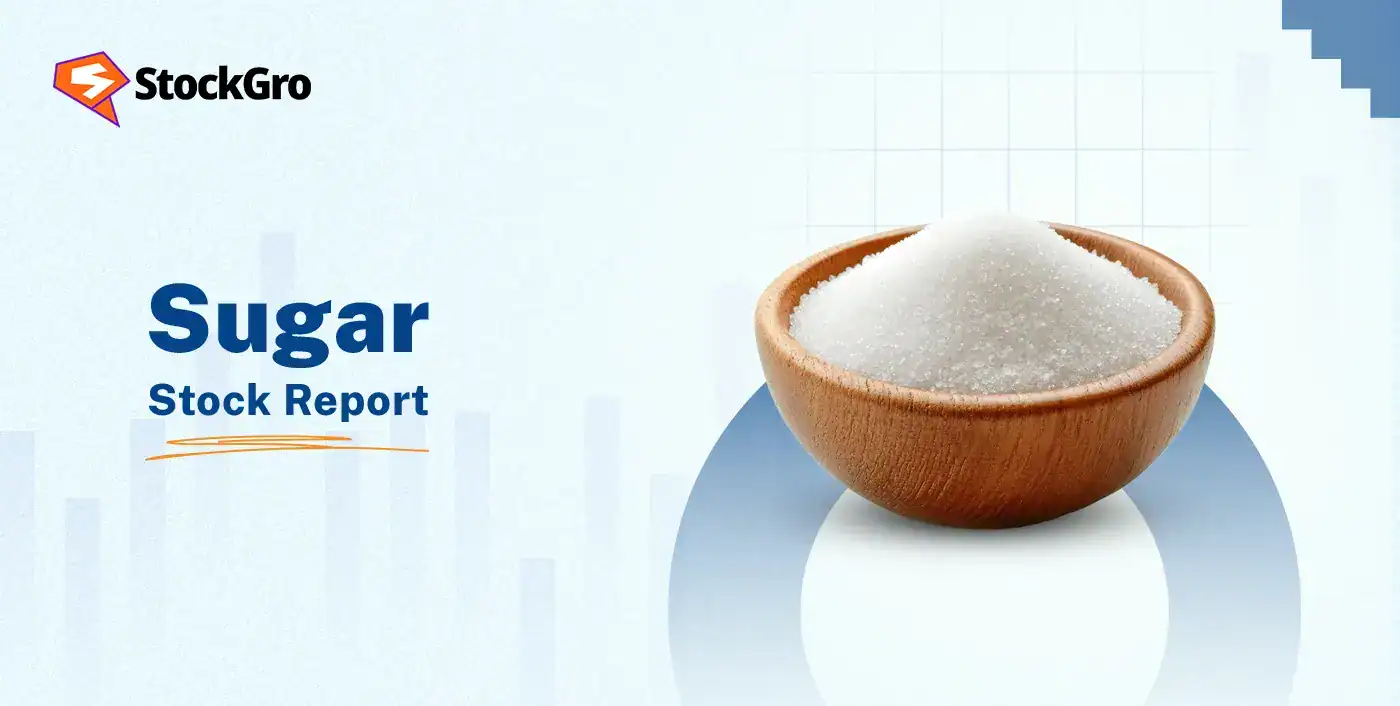
Sugar Sector Overview
Sugar is produced from sugarcane and is one of India’s most important agro-industrial sectors. Beyond sugar, mills make ethanol, bagasse-based power, molasses and other co-products. The sector ties together farmers’ incomes, rural employment, food prices, energy policy (ethanol blending), and industrial inputs (refined sugar and industrial alcohol). Because sugar is cyclical and policy-sensitive, company profits swing widely with harvests, government rules, ethanol demand and weather.
Value Chain of the Sugar Industry
Farming: Farmers grow sugarcane (seasonal crop). Yield, acreage and cane quality determine raw material availability.
Procurement: Sugar mills procure cane from local farmers where price and prompt payment are critical to relations.
Processing: Mills crush cane during the crush season and extract sugar (saccharose). Key metrics: tonnes crushed and recovery rate (sugar produced per tonne cane).
Products:
- Crystallized sugar (raw/refined) is sold to domestic market or exported.
- Molasses is a by-product used for ethanol or animal feed.
- Ethanol is produced from molasses or sugar; sold to oil marketing companies under blending programmes.
- Bagasse power : burning fibrous residue to produce electricity (own use + sale to grid).
Distribution & Sales: Sugar is sold in wholesale markets, to traders, bulk consumers, retailers and via export channels when allowed.
Key Sector Dynamics and Drivers
- Monsoon & cane acreage: Sugarcane is water-intensive. Monsoon patterns and irrigation determine planted area and yields.
- Recovery rate: Small changes in recovery (e.g., 0.1–0.5%) materially alter sugar output and margins. Recovery improves with cane quality and mill efficiency.
- Sugar prices: Domestic sugar realisations (₹/kg) are the major revenue driver. Prices depend on supply-demand balance, government policy and global prices.
- Ethanol demand & pricing: Government blending targets (e.g., 10%, 20%) create captive demand for ethanol. Ethanol prices and timely payments by oil companies influence margins.
- Power sales: Bagasse-based co-generation provides non-sugar revenue and reduces seasonality. PPA tariffs and dispatch determine cash flows.
Seasonality in the Industry
- Crushing season (usually Oct–Apr/May): Mills operate at full capacity : revenues and cashflows peak.
- Off-season: Mills may be idle or run limited operations; ethanol production (if distilleries rely on molasses) and power sales help smooth earnings.
- Cyclical nature: Good monsoon and higher acreage → higher production → potential price drop. Poor monsoon → lower production → price rise. Government interventions often try to stabilize prices but add uncertainty.
Economics : how to think about a mill’s profitability
- Top-line drivers: tonnes crushed × recovery rate × sugar price + ethanol & power volumes × prices.
- Key cost components: cane cost (major), energy, labour, repairs, chemicals, freight, interest.
- Leverage effect: Fixed costs (plant, amortisation) mean higher utilisation improves margins quickly.
- Working capital: Sugar inventory and cane payables drive working-capital needs and interest costs; large stockpiles can hurt cash flow.
Major risks & regulatory points
- Price risk: Sharp fall in domestic sugar prices due to surplus output or weak demand.
- Weather / crop failure: Drought or pestilence can reduce output unpredictably.
- High cane payables: Large unpaid cane dues strain liquidity and farmer relations.
- Inventory lock-in: Holding large sugar stocks expecting higher prices ties up cash and increases interest expense.
- Ethanol policy execution risk: Delays in payments by oil marketing firms, or changes in procurement prices, reduce distillery margins.
- Power dispatch risk: Grid curtailments or unfavorable PPA renegotiations hit co-gen income.
Practical financial metrics & what to track every quarter
For any Sugar company, these KPIs tell you the health story which you should track religiously:
Operational:
- Area planted & acreage growth (seasonal indicator).
- Crush volume (tonnes cane crushed).
- Recovery rate (%) : extremely sensitive.
- Sugar production (tonnes).
- Ethanol production (KL) & utilisation (%) of distillery.
- Power generated & sold (MU).
Commercial / financial:
- Average sugar realisation (₹/kg) : domestic vs export realisation.
- Ethanol realisation (₹/litre) : procurement/contract price.
- Power tariff (₹/unit) for PPA sales.
- Gross margin / EBITDA per tonne : normalize across cycles.
- Inventory days (sugar stock) and cane payables.
- Net debt / EBITDA and interest coverage.
- Capex for distillery or capacity expansion (timing matters).
Policy & market:
- Government ethanol blending target & actual %.
- Export permission status / duty changes.
- Minimum support price or any levy announcements.
Valuation and Stock Market Trends
| Company | CMP(in ₹) | P/E | RoCE | 1Y Returns |
| Balrampur Chini | 468 | 23x | 10% | -22% |
| Triveni Engg | 355 | 36x | 9% | -10% |
| Sh Renuka Sugar | 30 | NA | 11% | -26% |
| Bannari Sugar | 3384 | 37x | 9% | -8% |
Conclusion
The Indian sugar sector is large, strategically important and highly cyclical. Ethanol and bagasse power are the two structural levers that can de-risk earnings and create a steadier cash-flow profile for well-run mills. For investors, the sensible approach is to focus on integrated, low-debt companies with strong distillery and power streams, track policy moves closely, and use scenario-driven valuation to manage the sector’s inherent cyclicality.
If you found this helpful and want regular stock trade calls, check out my StockGro profile here: https://stockgro.onelink.me/vNON/6m6ykj0d
